Industry updates / Lowest greyhound racing injury rates recorded
The Greyhound Welfare & Integrity Commission has released the latest analysis of greyhound injuries for the period of April – June 2020, which shows the lowest catastrophic injury rate since reporting began in 2016 and the lowest overall injury rate since 2018.
Chief Veterinary Officer, Dr Michelle Ledger, said the results were a positive indication that the industry’s increased focus on safety and welfare is paying off.
“The last quarter saw the lowest overall injury rate reported since 2018 and the majority of those injuries were classified as ‘Minor’ which require a stand down period of ten days or less,” Dr Ledger said.
“The rate of greyhounds suffering a catastrophic injury resulting in euthanasia or death was 0.5 per 1000 starts, which is the lowest catastrophic injury rate recorded in NSW since reporting began.”
Data from the last twelve months also shows that the number of euthanasia’s performed at the track have halved when compared to the previous year.
“I would really like to acknowledge the work of the Commission’s On-Track Veterinarians for the important role they play at the track,” Dr Ledger said.
“This incredible result has been a huge team effort in applying our welfare guidelines and in helping to educate the industry and promote the treatment and rehabilitation of injured greyhounds.”
The Commission works closely with the University of Technology Sydney who manage the Greyhound Examination Database using data recorded by the Commission’s On-Track Veterinarians. The data is used to inform track safety measures and analyse the effectiveness of these measures.
“A number of measures that have been implemented are contributing to a decrease in the injury rates of racing greyhounds,” Dr Ledger said.
“These include an increased focus on track preparation by clubs and pre-race safety checks by the Commission’s Stewards, as well as access to immediate veterinary care on-track and GRNSW’s Injury Rebate Scheme to assist with treatment and rehabilitation costs.”
The Commission’s Race Injury Review Panel, a first of its kind in the sport, is also responsible for analysing all serious injuries and making recommendations that focus on the safety and well-being of racing greyhounds.
“The Commission is committed to seeing this downward trend continue by supporting all evidence-based initiatives that will improve welfare outcomes for racing greyhounds,” Dr Ledger said.
The Analysis of Greyhound Injuries April – June 2020 can be viewed in full on the Commission’s website.
